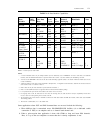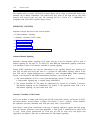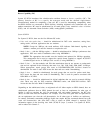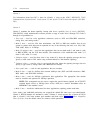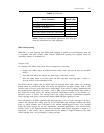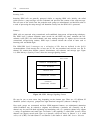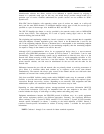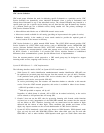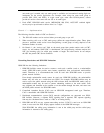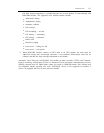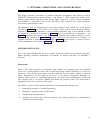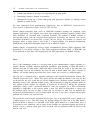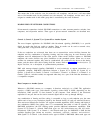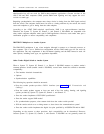
INTRODUCTION
1-29
one trunk type is needed, only one trunk group is available, and conventional routing digits are
inadequate for the current application (for example, when using the same trunk group to
provide DID, SDN, and DOD). A single trunk type, other than ISDN-dynamic, cannot
provide all services since some calls use CO or tie trunk types.
4. Each AT&T ISDN-PRI nodal service (MEGACOM 800, SDN, ACCUNET switched digital
service) may be provisioned to deliver from 0 to 7 digits.
Generic 1 — Implementation
The following describes details of CBC on Generic 1:
1.
2.
3.
The SID-ANI number can be received either per trunk group or per call
When receiving calls over a CBC trunk group, define the usage-allocation plans. These plans
prevent a particular nodal service from monopolizing a trunk group or being deprived of the
minimum number of trunks.
On Generic 1, the “service type” field on the trunk group form permits entries such as CBC,
access, tie, and tandem. When CBC is administered, the call-processing software analyzes the
NSF (for incoming calls) for called party number or length. The other entries do not analyze
the NSF but permit CBC Service Selection.
Networking Restrictions and ISDN-PRI Limitations
ISDN-PRI has the following limitations:
1.
2.
3.
4.
ISDN-PRI facilities cannot be used to connect a main and a satellite (such as a main/satellite
trunk). ISDN-PRI trunks provide more feature capabilities than conventional main/satellite
trunks. Therefore, it is recommended that AAR be used with ISDN-PRI trunks to provide
private network facilities.
Even though main/satellite trunks cannot be used over ISDN-PRI facilities, the main/satellite
feature may still exist on a switch that uses ISDN. For example, ISDN-PRI facilities may be
used to access the public network using the ARS software while non-ISDN-PRI trunks (such as
main/satellite trunks) may be used to connect subtending switches to the main switch. Calls
may originate and terminate on the satellite or on the tandem through the main, and route onto
the ISDN public network via ISDN-PRI trunks.
Centralized Attendant Service (CAS) uses an ISDN-PRI unsupported trunk type. Therefore,
CAS is unavailable with ISDN-PRI facilities.
Distributed communications system (DCS) network configurations are supported over ISDN-
PRI facilities. However, a separate DCIU signaling link is required. This separate signaling
link may be a B-channel that is used as a DSC or an analog facility.
ISDN-PRI and DCS are two separate networking services. If DCS is used over an ISDN-PRI
trunk, in most cases the DCS display appears instead of the ISDN-PRI messages.
With ISDN-PRI, the calling party information is sent to the called party and the called party
information is returned to the calling party.



